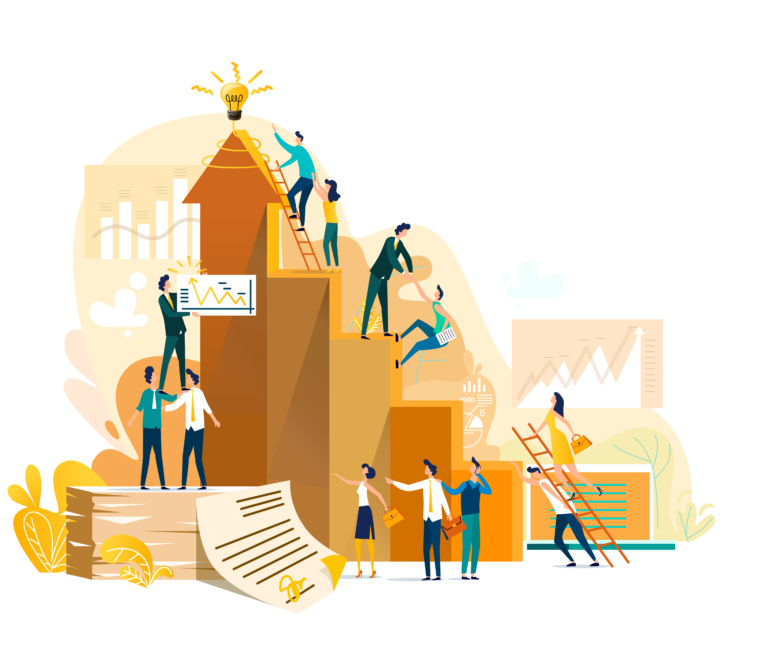
Tax Compliance with HRIS: What You Need to Know
Tax compliance with HRIS will surely lessen your burden during tax season by streamlining your processes. Read to know how!

Despite the continuous vaccination efforts all over the country, we have achieved a record high of infections once more. This development has increased the need for remote work, digital transformation, and attention to employee mental health. Thus, it appears we will continue to see the following preexisting HR trends in the Philippines well into the end of the year:

Organizations continue to adapt to the changing landscape of business. As such, they had to put several plans in place to lessen the damaging effects of the ongoing pandemic. Among these ongoing trends is remote operations.
Remote work allows staff to work wherever they are–as long as they have an Internet connection and a computer. Working remotely isn’t exactly new. In fact, it has been a preexisting HR Trend brought by technological progression.
However, the pandemic had set it off abruptly and on a much larger scale. As a result, it left many unprepared businesses grasping in the dark for an effective management strategy for the new normal.
Fast forward to a year into the pandemic, employees and management are now used to remote operations. The ease and chance to work where they are most comfortable led employees to be inclined to work from home—permanently.
However, there are still matters that are best done on-site, and there are employees who still prefer working in their office workstations. Hence, the emergence of the Hybrid work model.
The Hybrid Work Model consists of 3 types. First, some staff work on-site and some remotely. Second, all employees reporting on site with options to work from home several days a week. Third, a combination of both.
In a study conducted by Robert Walters Consultancy, they found that:
The study also found that the top benefit of remote work is less time spent on transport (83%). Other benefits include more flexibility in working hours (68%) and improved productivity (64%).
The hybrid model gives staff the capacity to work with some freedom. They also enjoy the ease of remote work without the hassle of transport and being close to their family.

Anxiety regarding the future and various other uncertainties are some mental health wellbeing issues caused by the pandemic. A 102% rise in the risk of employee depression also shows how the pandemic is taking a heavy toll on everyone’s mental health. Hence, among these preexisting HR Trends in the Philippines is the need for every organization to ensure that employees are well taken care of.
Based on a report from MindNation regarding the subject of mental health during COVID-19, Filipino employees are currently experiencing:
Organizations can implement some solutions or programs to address and improve an employee’s mental health wellbeing. In addition, the report identified these local companies that adapted a program or approach to improve mental health and stress management:
Because each company culture differs from one another, HR professionals should tailor a strategy or approach that will work with the current culture of their company. Moreover, they have to ensure that it will be effective in the Philippine setting.

The rapid development and implementation of technological advancements that reinforced preexisting HR Trends in the Philippines caused by Covid-19 forced us all to adapt in the shortest amount of time possible. The pandemic pushed businesses and organizations to a point where embracing technology is no longer seen as an edge against your competitor. Instead, it serves as a necessity in order to stay competitive and relevant in this age of disruption.
To effectively adapt to the fast-paced digital transformation caused by the pandemic, HR and IT collaboration has become an important partnership–from strategy and policymaking to managing day-to-day tasks.
In addition, according to Toolbox, the organization has to clearly define the goal of implementing HR’s Digital Transformation. This includes asking the questions:
With the shift to remote work and the increasing demand for it to stay, management and the HR should focus on benefits, measurability and quantifiable parameters, and profit gains. First, the transformation should benefit the end-user. Second, to gauge employee productivity, managers need data gathering tools to drive objective insights regarding an employee’s performance. Last, it should gear the financial impact on the business towards an increase in revenue.
However, the most vital component of an organization are its employees. We should remember that data aren’t the sole gauge of employee commitment and productivity, and only serve as a tool to supplement our existing insights. Indeed, despite the data-driven results of these tools, the human factor is still the most vital component when arriving at a favorable decision.
Covid-19 has shown us how connected we all are with one another—from employees to management and executives. As HR professionals, our duty is to provide a strategic setup that works and benefits both the employees and company. We should strive to address the preexisting HR Trends in the Philippines and protect our human capital by creating and implementing a strategy that encourages them to re-engage and recharge from time to time while optimizing their performance.
Hurey enables HR personnel to focus on the human aspect of the job by automating most HR processes such as payroll, recruitment, tracking, timekeeping, etc. to achieve an effective digital transformation. With Hurey, you can lessen the time spent on repetitive tasks and create strategies to boost productivity and promote workplace mental health and wellbeing.
Moreover, we have specifically tailored Hurey to the Philippine market and workplace culture, making it an ideal HRIS platform for local organizations. Request a demo now and find out how Hurey can help your business in 2021 and beyond.
Interested?
Share us on

Tax compliance with HRIS will surely lessen your burden during tax season by streamlining your processes. Read to know how!

Read along as we explore HRIS security best practices, aimed at ensuring the utmost protection of employee data.

A revolutionary school management system for Filipino learners can help in improving education in the Philippines. Find out how!


